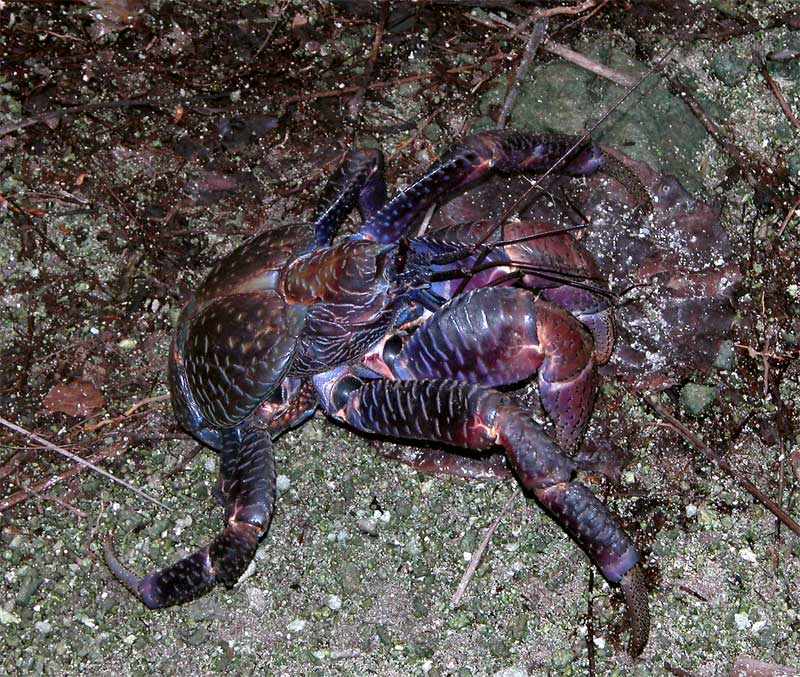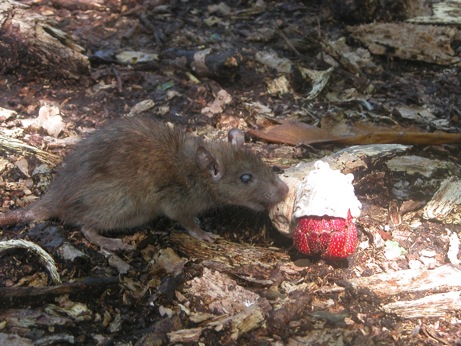Published in the Ocean Watch column, Honolulu Star-Advertiser © Susan Scott
June 14, 2010
I see Buck Walker died. Walker was convicted of murdering Muff Graham, a San Diego woman, in 1974 at Palmyra Atoll, and stealing her sailboat. Muff’s body was found cut up by blow torch and stuffed in a sea chest. The body of her husband, Mac, remains missing.
I wouldn’t normally remember a murderer’s name nor dwell on such grisly events. But several years ago, when I was planning to sail from Honolulu to Palmyra, well-meaning people told me often, in warning, about Walker and his deadly deeds.
I wasn’t worried, though, about bloodthirsty pirates. These days, the biggest concern on Palmyra is rats – 25,000, give or take a few thousand. On only 680 acres (about one square mile) of land, that’s a plague of nearly biblical proportions.
Palmyra Atoll, about 1,000 miles south of Honolulu, consists of 52 islands circling three connected lagoons. Up to 200 inches of rain per year makes most of these tiny islands tangles of jungly forests. The vegetation types vary from island to island depending on what past inhabitants – fishers, farmers, sailors, seabirds – built, grew or left behind over the decades.
Twenty-nine bird species nest, visit or winter on Palmyra. While I was there, the ground-nesting sooty terns, also called wide-awakes, were busy raising chicks, screeching day and night, “I’M AWAKE! I’M AWAKE!”
Brown booby birds were quieter in their domestic chores, but catching the fast-running chicks for banding was a challenge. Red-tailed tropic birds were easier to catch because those seabirds’ legs aren’t suited for running. Instead, the chubby chicks squatted in their nests like tea cozies with tails, squawking their protests.
In addition to birds, Palmyra has crabs. The royalty are the endangered coconut crabs, which come in orange, blue and brown. These bruisers grow to about 16 inches long, with leg spans of about 3 feet, and weight up to 10 pounds.

Another name for these pint-size Godzillas is robber crabs because they sometimes steal things. I have a video of a robber crab dragging a machete, bigger than the crab itself, down a weedy path. (see December 31, 2004 column for video)
Scurrying among the coconut crabs, seabirds and shorebirds are tens of thousands of red and purple hermit crabs wearing white turban shells about the size of human fists. Add the numerous green, yellow and orange land crabs called tupas, and the place is literally crawling with crabs, all competing with rats for food and, along with the birds, doing their best to avoid becoming rat food.

These native species, however, are about to get some help. Palmyra’s wildlife managers are planning a rat eradication program to begin next summer, and if its success is anything like that of Midway, the native plants and animals on Palmyra will bloom like they haven’t done in decades.
While I was working on the atoll, I read the book “And the Sea Will Tell,” an account of the Palmyra murders and trials. It was hard to read, and then impossible to forget, especially after seeing photos of the people, their boats and the anchorage, so near my own. After that, every time I paddled my kayak past the crumbling Navy pilings where the Grahams had tied their boat next to Walker’s, I grieved for Mac and Muff.
This month, Walker died of a stroke in a nursing home, two years after being paroled. To the end he claimed his innocence, but there’s no disputing the facts: The Grahams presumably suffered horrible deaths, and he sailed to Honolulu on their boat.
Today all that remains of Walker and the Grahams is their story, and that will forever be part of the history that shaped Palmyra. Hopefully, we can soon say the same of its rats.